Last week, I was heading home from a day of scouting in Westchester when I found myself passing through Sleepy Hollow. Suddenly, it felt like autumn had officially arrived.
As a kid, there was nothing I loved more around Halloween than revisiting The Legend of Sleepy Hollow – both Washington Irving’s tale, for which I had a beautifully illustrated children’s book, and the wonderful Disney animated version.
I ended up rereading the story later that night, and was surprised to find that Irving is pretty specific about the route Ichabod Crane takes while fleeing from the Headless Horseman. I decided to take a trip back to Sleepy Hollow to try and recreate Ichabod’s fateful race myself.
In the story, Ichabod’s night of terror begins quite cheerfully at a party taking place in the home of Baltus Van Tassel, a wealthy Dutch farmer whose daughter Katrina Ichabod is attempting to woo. And so my trek began at the corner of Hamilton Place and Route 9 in Tarrytown…
It was at this site that the real Baltus Van Tassel once had a farm, which was later purchased by the Mott family and turned into a tavern/hostelry sometime before the Revolutionary War.

Photo from Louis Glacer’s Process (1882), reprinted in Jonathan Kruk’s
Legends and Lore of Sleepy Hollow and the Hudson Valley
The house managed to survive until the late 1800s, when it was finally torn down to make way for the town’s new high school. According to this report from 1899, the original front door to the Van Tassel house used to reside in the school’s library. Very curious where it eventually wound up.
After a night of ghost stories, Ichabod finally gives up on Katrina and departs for Sleepy Hollow…
…climbing atop his broken-down steed Gunpowder and heading north along the Old Albany Post Road, then the main thoroughfare connecting New York City to Albany (today, Route 9).
“It was the very witching time of night that Ichabod, heavy-hearted and crest-fallen, pursued his travel homewards, along the sides of the lofty hills which rise above Tarry Town, and which he had traversed so cheerily in the afternoon.”
“Far below him, the Tappan Zee spread its dusky and indistinct waste of waters, with here and there the tall mast of a sloop, riding quietly at anchor under the land. In the dead hush of midnight, he could even hear the barking of the watch dog from the opposite shore of the Hudson…”
As Ichabod continues down the road, he begins to dread an approaching spot, said to be haunted: “An enormous tulip-tree, which towered like a giant above all the other trees… Its limbs were gnarled and fantastic, large enough to form trunks for ordinary trees, twisting down almost to the earth, and rising again into the air. It was connected with the tragical story of the unfortunate André…”
The André in question refers to British Army officer John André, who was hanged as a spy for assisting Benedict Arnold in his attempt to surrender the fort at West Point to the British. André was captured near a particularly notable tree by three American militiamen, today marked by a monument (the tree was struck by lightning and destroyed in 1801).
Below, a print depicting André’s capture and the once rural terrain:
As Ichabod continues on, “about two hundred yards from the tree, a small brook crossed the road, and ran into a marshy and thickly-wooded glen, known by the name of Wiley’s swamp. A few rough logs, laid side by side, served for a bridge…”
Today, Wiley’s Swamp is long gone, replaced by the nicely manicured Patriots Park.
Prior to becoming a park, the former swamp was home to various developments dating to the 1800s, including an all-girls boarding school attended by Lauren Bacall. Below, the land in 1854, with the André monument in the foreground:
However, the stream Ichabod crosses is very much still in existence, today known as André Brook…
…and it is at this very spot that he first encounters the Headless Horseman: “A plashy tramp by the side of the bridge caught the sensitive ear of Ichabod. In the dark shadow of the grove, on the margin of the brook, he beheld something huge, misshapen, black and towering. It stirred not, but seemed gathered up in the gloom, like some gigantic monster ready to spring upon the traveler…
“On mounting a rising ground…Ichabod was horror-struck, on perceiving that he was headless!—but his horror was still more increased, on observing that the head, which should have rested on his shoulders, was carried before him on the pommel of the saddle…He rained a shower of kicks and blows upon Gunpowder…Away then they dashed…”
Racing onward, Ichabod “had now reached the road which turns off to Sleepy Hollow; but Gunpowder, who seemed possessed with a demon…made an opposite turn, and plunged headlong down hill to the left.”
The “road to Sleepy Hollow” described above is today Bedford Road, branching off to the east. But Gunpowder mistakenly goes left…
…plunging down the very steep drop in Route 9:
At the base of the hill, “an opening in the trees now cheered [Ichabod] with the hopes that the church bridge was at hand. ‘If I can but reach that bridge,’ thought Ichabod, ‘I am safe.'”
“He saw the walls of the church dimly glaring under the trees beyond…”
…Passing on the left the “mill-pond” where Ichabod would court the local “country damsels…”
“Another convulsive kick in the ribs, and old Gunpowder sprang upon the bridge…and now Ichabod cast a look behind to see if his pursuer should vanish, according to rule, in a flash of fire and brimstone. Just then he saw the goblin rising in his stirrups, and in the very act of hurling his head at him. Ichabod endeavored to dodge the horrible missile, but too late. It encountered his cranium with a tremendous crash—he was tumbled headlong into the dust, and Gunpowder, the black steed, and the goblin rider, passed by like a whirlwind.”
Today, the “Headless Horseman Bridge” is a multi-lane stretch of Route 9 crossing the Pocantico River, built in 1912 by William Rockefeller. Despite popular belief, there was never a covered bridge at anytime here. Instead, the original bridge was, according to the NY Times, “a wooden structure, devoid of ornamentation or architectural embellishment, which gradually fell into decay.”
But where exactly was the original bridge? Irving adds an interesting postscript to the story, stating that “the bridge became more than ever an object of superstitious awe, and that may be the reason why the road has been altered of late years, so as to approach the church by the border of the mill-pond.”
In other words, the Old Albany Post Road once passed to the east of the church, through what is now the Sleepy Hollow Cemetery. Curiously, there is still a road in existence known as Old Broadway running parallel to Route 9, and I’d love to know if this is the original route Irving refers to.
Approaching the church (visible through the trees beside the Citgo sign) via Old Broadway would make sense if the road were to then turn to the right of the church.
Unfortunately, the original location of the Sleepy Hollow Bridge crossing the legend-shrouded Pocantico River has been forever lost to time.
Finally, though Ichabod never reached it, I decided to end my journey at the historic Old Dutch Church.
As I made my way to the entrance, I noticed an ancient mile marker dating to 1798, citing the distance to New York City:
The second oldest church in New York, the Old Dutch Church of Sleepy Hollow was built circa 1697 by Frederick Philipse I.
The interior is charmingly simple:
Interestingly enough, the churchyard cemetery predates the church. When Philipse arrived in 1683, he found a small cemetery consisting of 50 burials had already been started by nearby settlers and decided to build his church beside it.
There are two graves of note relating to The Legend of Sleepy Hollow…
First, that of Eleanor Van Tassel, believed to be the inspiration for Ichabod’s love interest Katrina…
…and nearby, Abraham Martling, the town’s blacksmith and thought to have been the inspiration for Abraham “Bram Bones” Van Brunt, Ichabod’s rival (if you’re looking for Ichabod Crane, he’s in Staten Island):
Last but not least, no trip visit to the Sleepy Hollow cemetery would be complete without a stop at the grave of the man himself:
I was thrilled to discover that Irving grounded his most famous tale in the actual geography of Tarrytown and Sleepy Hollow, and it’s a testament to his abilities that he was able to make a simple wooden bridge as famous as that one in Brooklyn.
If you’ve never been, Sleepy Hollow is definitely worth a trip – just be sure to keep an eye out for any shorter-than-average horseback riders…
-SCOUT
PS – If you happen to be in Tarrytown, I highly recommend a stop at the Lubins-n-Links hot dog shop. The BLT dog with chipotle mayo is amazing.
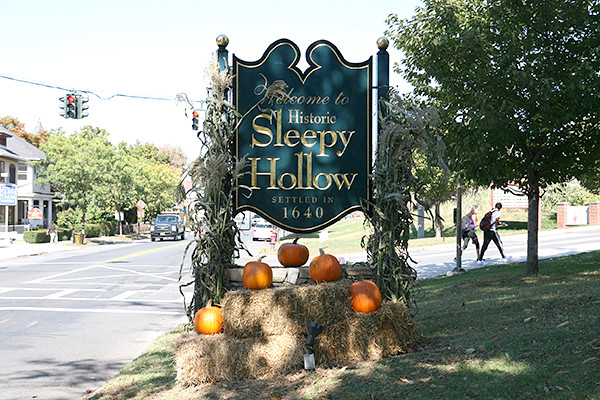
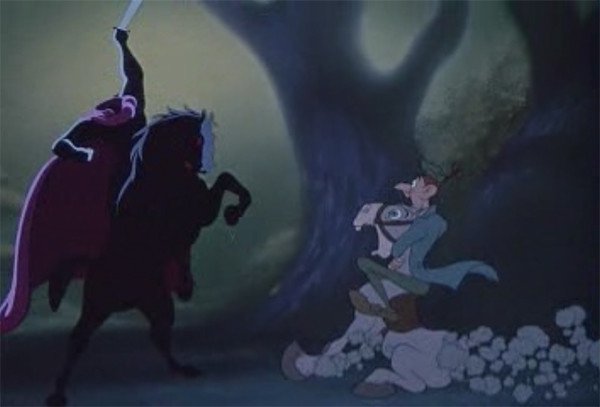

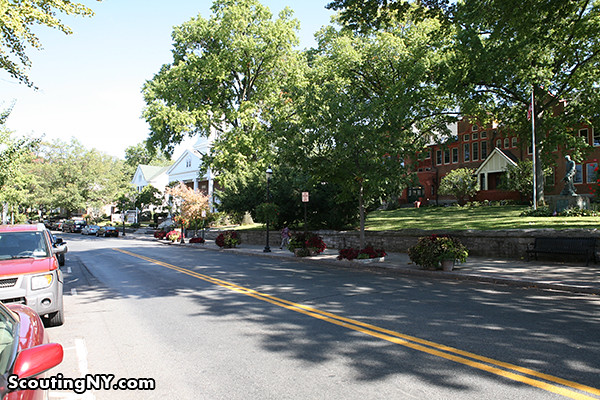
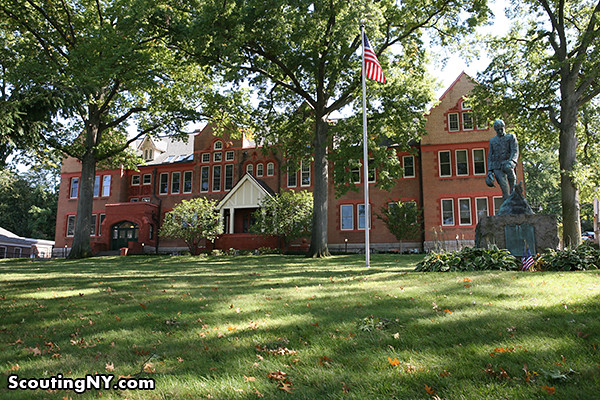


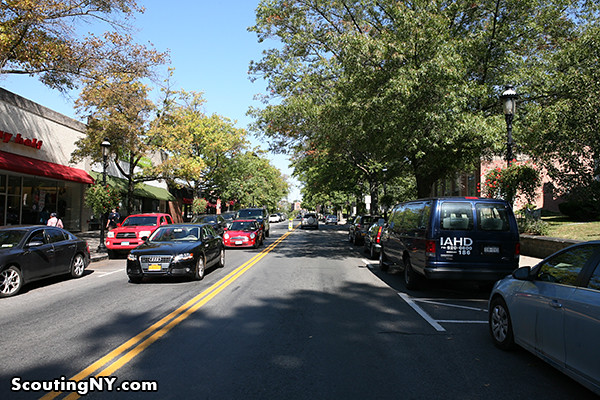
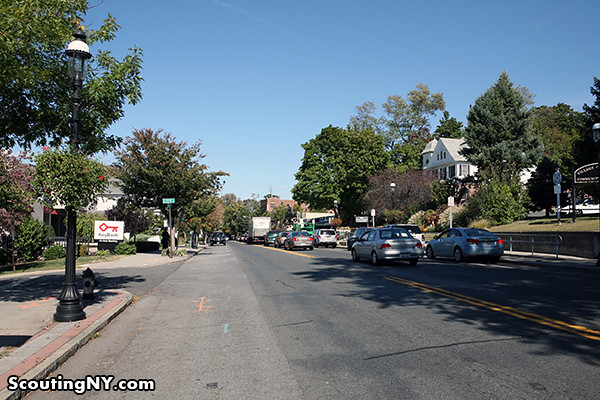

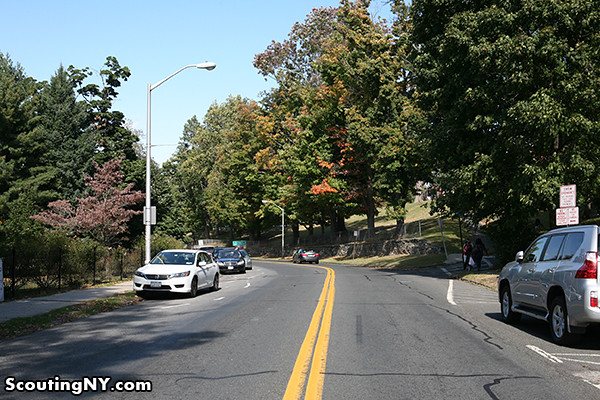

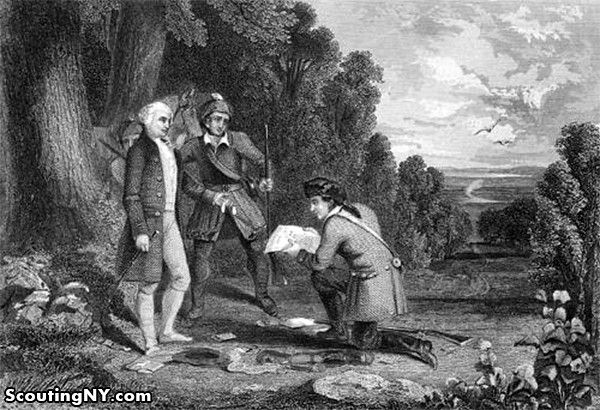
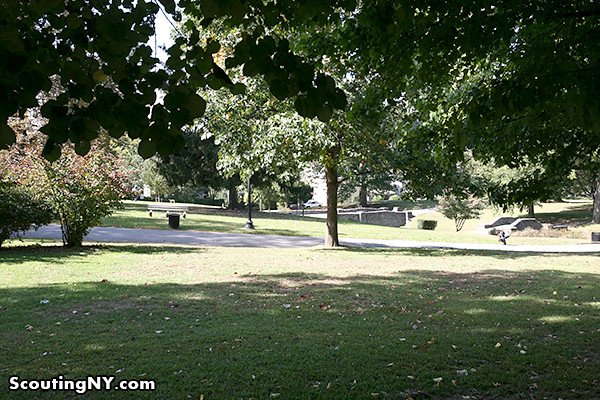

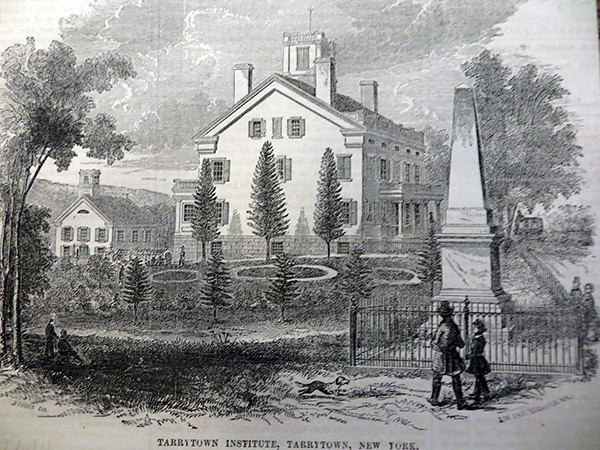
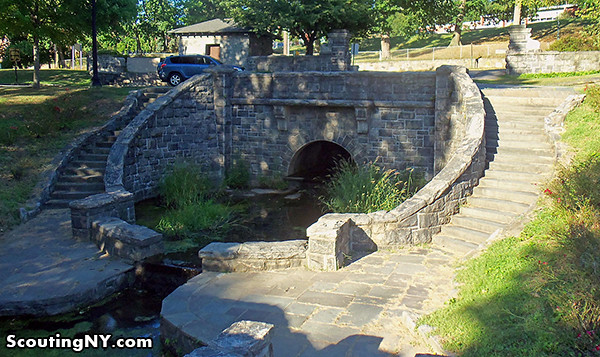
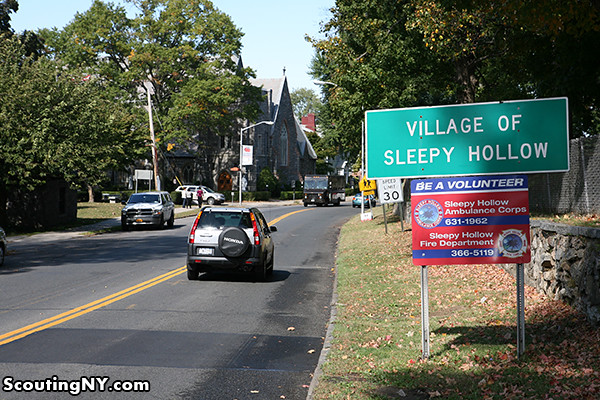
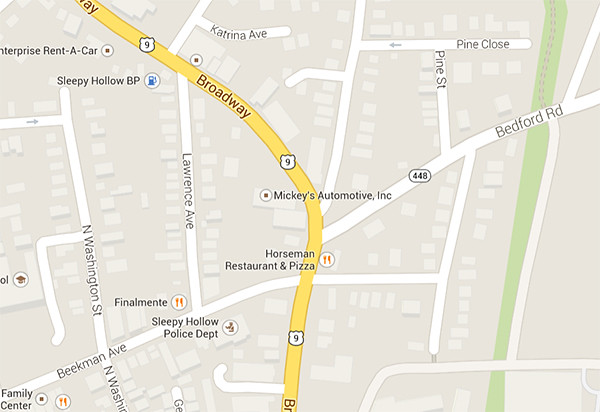


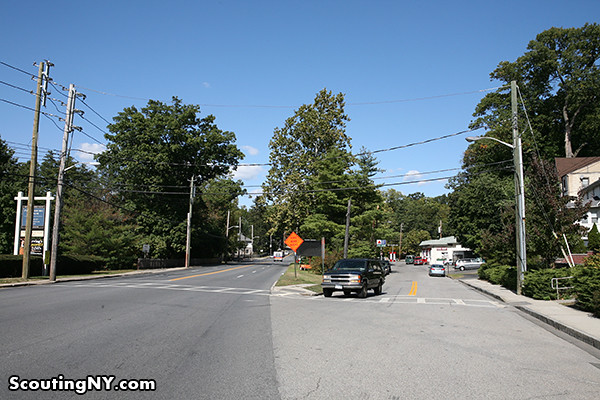

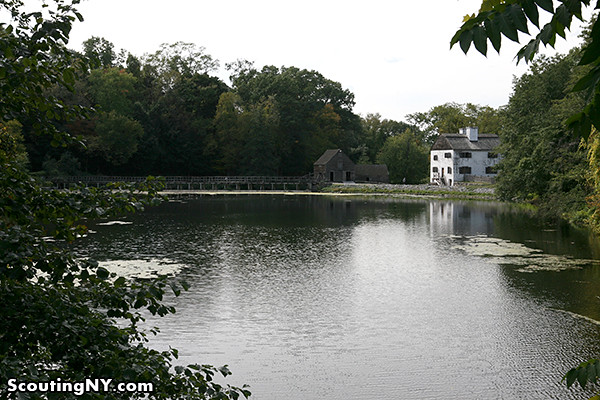
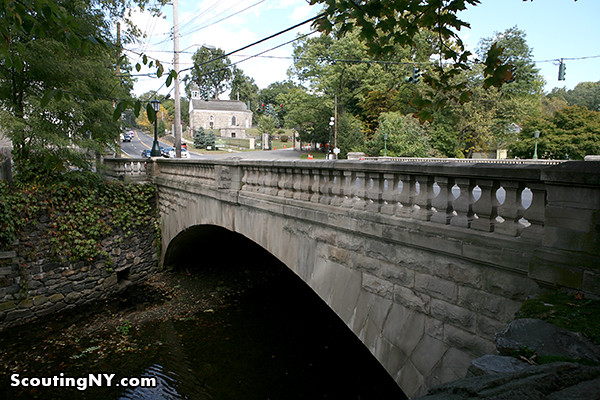
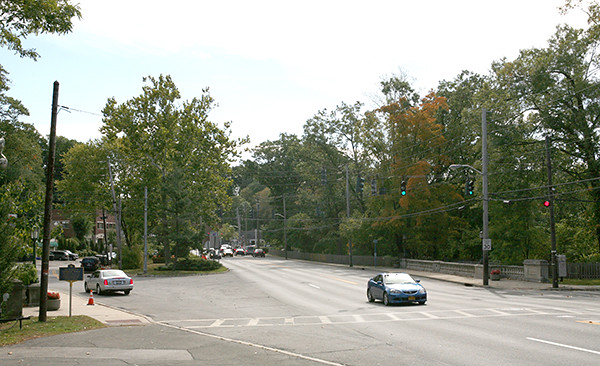


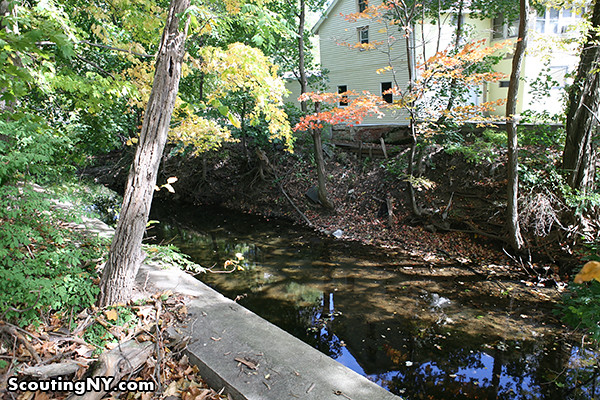
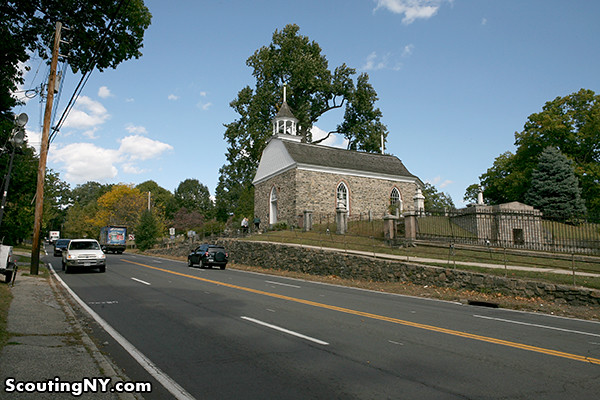

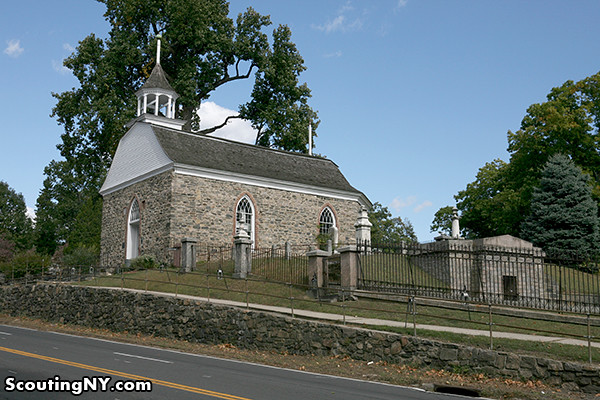
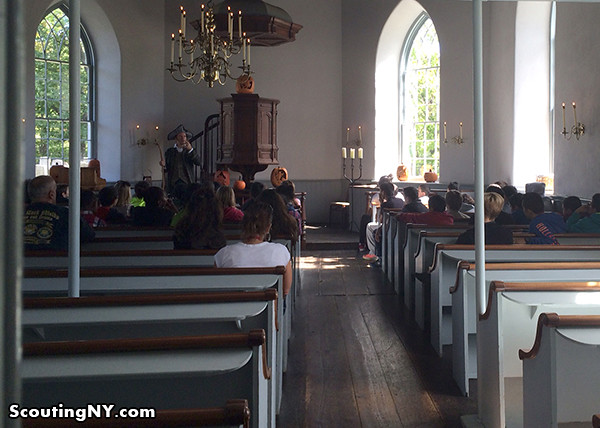
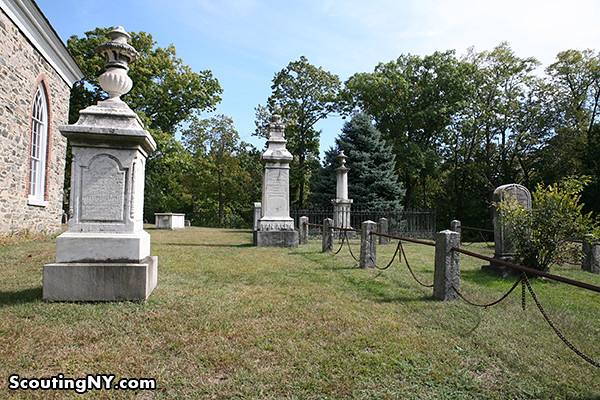
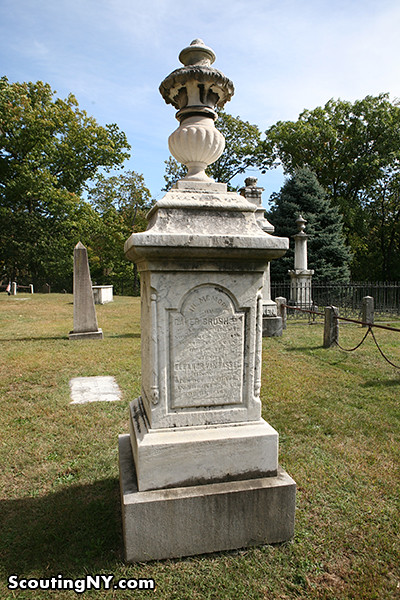

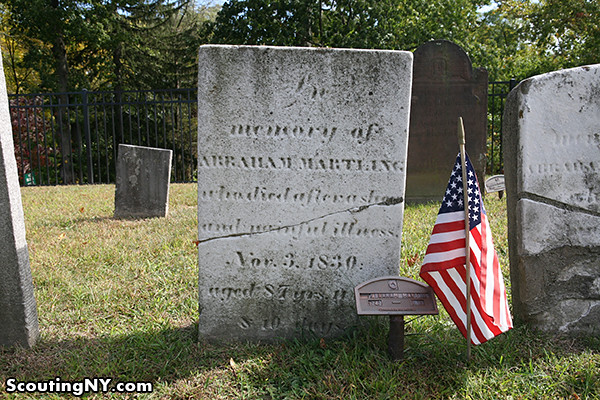
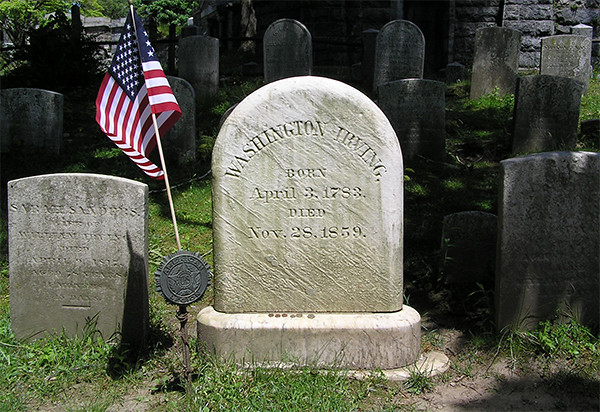


“just be sure to keep an eye out for any shorter-than-average horseback riders…”
During October, Phillipsburg Manor – the historical site across Route 9 from the Old Dutch Church – has a big event with all kinds of halloween-type things. Including a real headless horseman. (OK, a stunt rider dressed as a headless horseman, but it’s still pretty fun to see the guy ride up Route 9 and through the old cemetery.)
Love the Sleepy Hollow / Tarrytown area… we went last year just a few days after Halloween and it was perfect. The cemetery is one of my favorites and filled with a lot of people of historical significance.
“Settled in 1640” but only officially named Sleepy Hollow since 1996. Beautiful area and a super quick trip from the city.
It used to be the much more prosaic North Tarrytown, but following the closing of a General Motors assembly plant the town officials figured the name change would give everyone a nice boost.
Wonder no more, the front door to the Van Tassell farmhouse is safely at The Historical Sociey museum One Grove Street, Tarrytown.
There is a Hessian soldier buried in an unmarked grave in that cemetery, close to the church, who was decapitated by a cannon ball at the Battle of White Plains in the Revolution. He was the inspiration for the Headless Horseman. The cemetery caretaker pointed it out to me a few years ago. He was a treasure trove of knowledge on the history of the place.
I included a shot of the unmarked grave in this short video:
https://www.youtube.com/watch?v=bdC9DXvlYu0
The mile stone in front of the church is not original to that location either. It was moved from Broadway and Sunnyside Lane.
Irving’s works stand up well after 200 years. He is very accurate in many of his most famous works. Knickerbocker’s History though facetious tracks true to colonial history of New York and New England with a wry humor. All his works are public domain on e-reader platforms, so celebrate Halloween by reading our most famous ghost story.
I passed through Sleepy Hollow at least twice a week as a Service Technician for RCA/WHIRPOOL. That whole section of Westchester County is steeped and gives a person a sense of being included in the Legend of Sleepy Hollow. FromIrvington with its Wide Main Street to the Rockefeller Estates at Pocantico Hills , where I serviced the appliances in all the homes on and off the Estates.Back down to Broadway heading north through Sleepy Hollow until I passed the gates of Sing-Sing Prison, the homes stores and businesses are at least 150 years old. Once looking for a small street off Rte.9 in Ossining I made a turn into the street I thought was the one I was looking for, I was met by the sound of a loudspeaker telling me to turn around that I was on prison grounds . The voice told me my Service van would be fired upon if I delayed. I turned around and drove back up the driveway as fast as humanly possible!